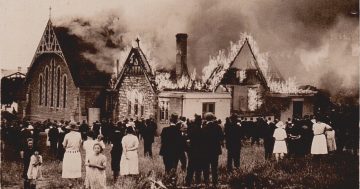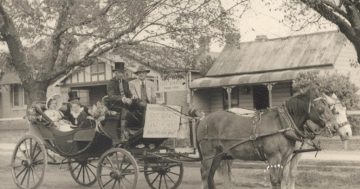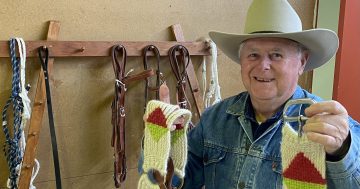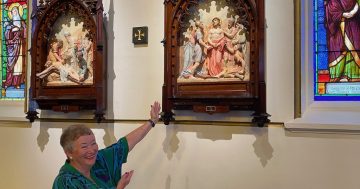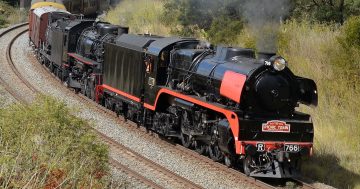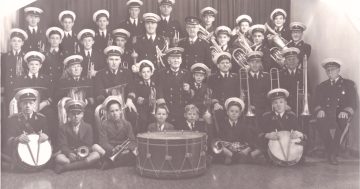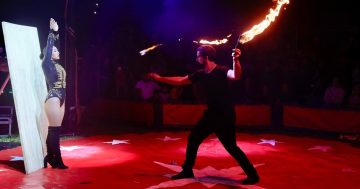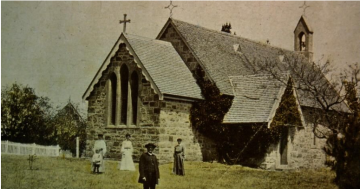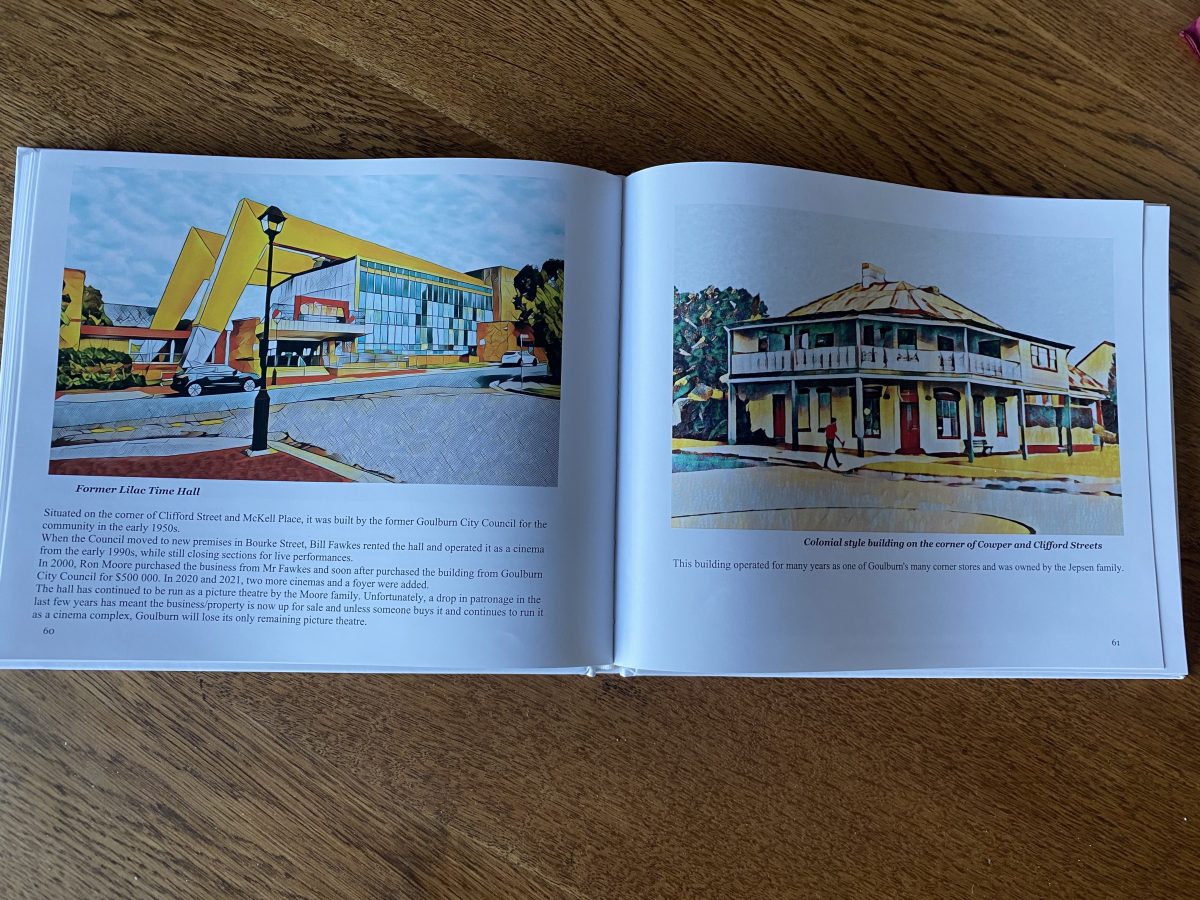
The addition of colour brings a fresh look to the Lilac Time Hall and landmark building on the corner of Cowper and Clifford Streets, Goulburn. Photo: John Thistleton.
Retired school teacher Joe Zappia has produced beautiful, semi-abstract images of Goulburn’s landmark buildings in a new coffee table book.
Using soft natural light, composition and the addition of colours through filters, Joe’s new publication Goulburn – 100 Images aims to promote the city’s diverse architectural heritage to visitors and local people alike.
Capturing buildings and landmark features, Joe began experimenting on his phone and computer with filters and software programs.
“As you can see colour is one of the most important things in the book, and there is an attraction to some of these primary colours which a photograph wouldn’t do justice,” he said. “This has more impact, I think.
“Two or three years ago I had an exhibition at the Goulburn Club with some of my photos, printed and framed. Out of 20 I think I sold 18, because they were all Goulburn images.
“The exhibition was a real buzz because I ended up with a few thousand dollars, which meant I could buy a new printer.”
With positive feedback and at the urging of friends, he began work on his latest book. From about 200 photos taken around Goulburn, he selected 100 images of what he believes are people’s favourites.
These range from the Court House, St Clair Cottage, and the railway station, to lesser-known buildings such as the small stone cottages in Grafton Street.
“The Lilac Time Hall, and (historic homesteads) Garroorigang and Riversdale, these are the ones people would most recognise.”
He waited for heavy rain to capture Marsden Weir in flood. He has also photographed the Old Goulburn Brewery surrounded by flood waters.
Goulburn – 100 Images retails for $50. The books will be on sale at the Goulburn Club and Roses Cafe. He will donate his commission from sales to the Goulburn Club’s lift fund and a charity. (You can also order a book by emailing [email protected]).
Among many early admirers of the book are Goulburn real estate agents, who have ordered copies for gifts for people when homes change hands.
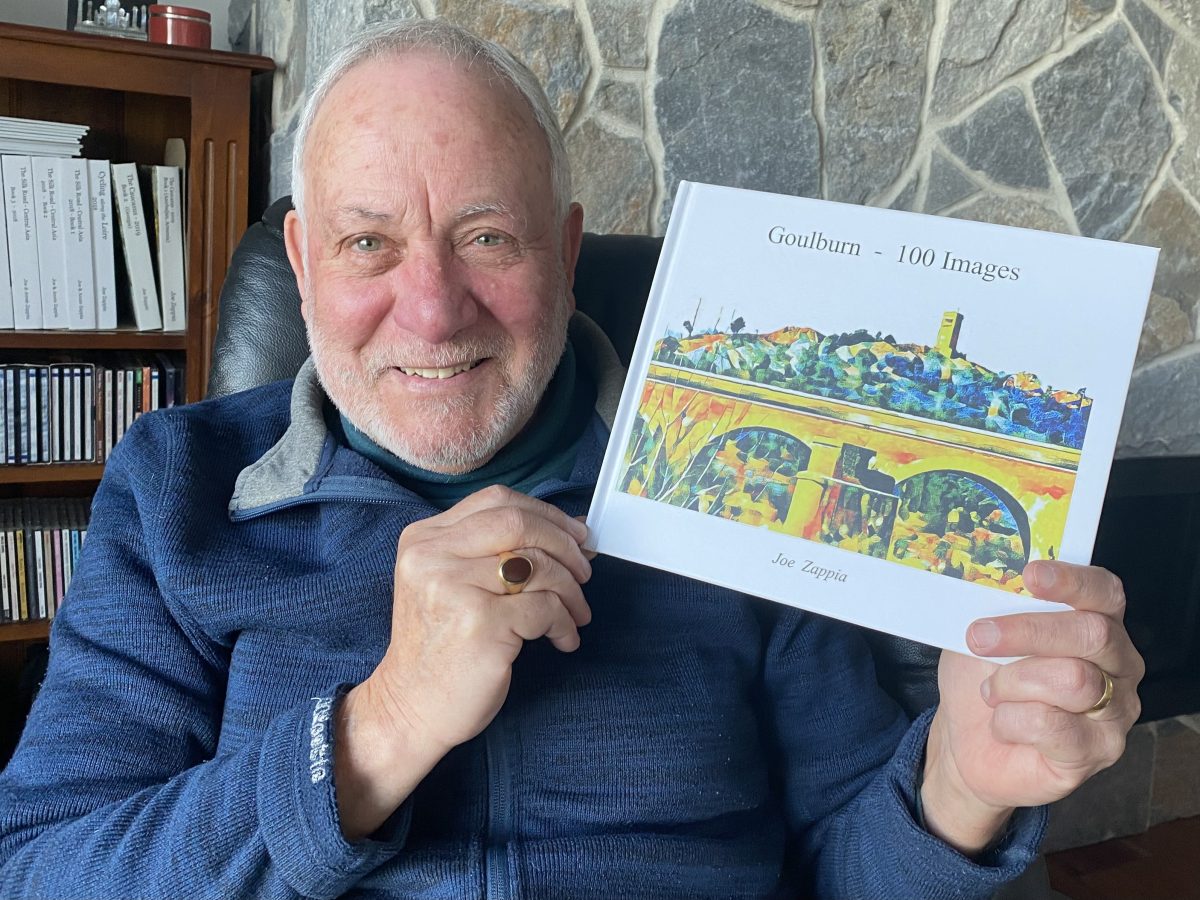
Self-published books hold many of the pictorial highlights of Joe Zappia’s travels. Now he has produced a Goulburn coffee table book featuring his choice of colour overlays. Photo: John Thistleton.
Joe’s work begins with a photograph and continues with filters, from four or more up to 10, until he is satisfied with the image. He edits and Photoshops the final image, sometimes enhancing colours.
“It’s a very subjective thing when I finish up,” he said.
Taking photos since he was 16, Joe bought a single-lens reflect camera during his first year of teaching. He began doing small jobs for two photographers who taught him how to use a dark room and basic composition skills.
Joe began photographing striking-looking buildings when he arrived in Goulburn as a young school teacher from Sydney in the early 1970s. He developed his own black and white prints, but work commitments restricted his photography.
“When I retired I thought right, I would spend more time on my hobby. I started photographing more and more of them (buildings),” he said.
After attending Goulburn professional photographer and teacher Brad Nichols’ short courses, Joe said much of his progress had been through trial and error.
Extensive travel has given him a multitude of buildings and landscapes to photograph. Soon after arriving in Goulburn he left with a friend to travel overseas, spending six months going across Asia and places like Afghanistan and Iran before the Shah was ousted. Turkey was a real eye-opener and he spent six months in a Kombi van travelling around Europe.
“I had met Annie (his future wife) beforehand which bought me back to Goulburn, otherwise my idea was to keep travelling indefinitely,” he said.
He was most drawn to Islamic architecture through Asia, Turkey, Kazakhstan, and Uzbekistan, and has been impressed especially with Istanbul’s Blue Mosque and Hagia Sophia.
Adorning his wall and taken in 1975 is an evocative study of a person praying in the Blue Mosque, printed and lacquered by Goulburn professional photographer Otto Knaus. Another favourite is the Taj Mahal, which he says is one of the most beautiful buildings in the world.
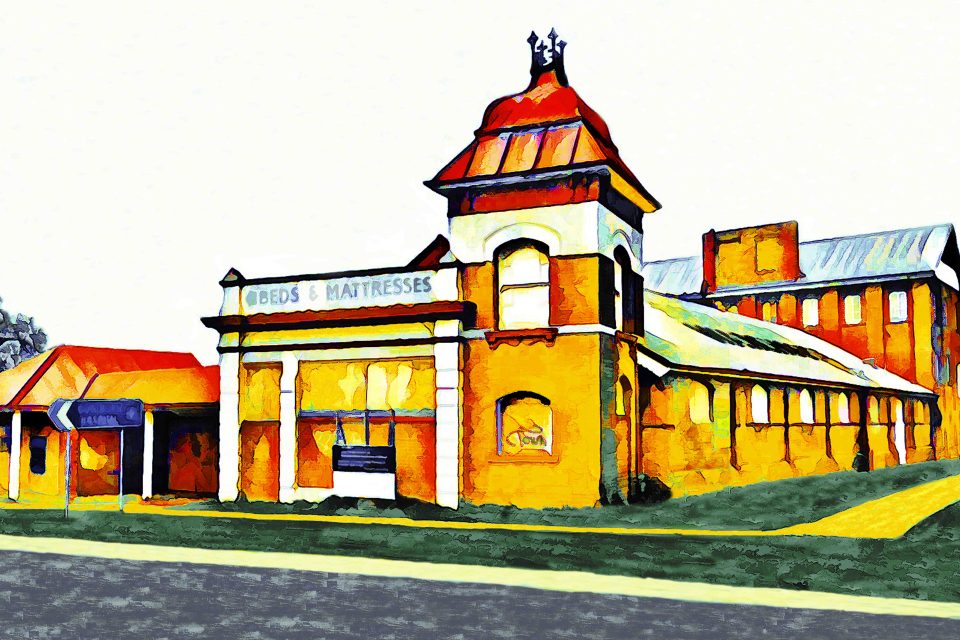




Having taught at Mulwaree High School, Marian and Trinity college in senior positions, he retired in 2012 and embraced creativity and something completely different to teaching.
“I like yellows, and reds and greens, the primary colours,” he said. “I just find they have a nice impact when you look at them, rather than a dull, grey photograph.
“I also like these autumn colours. They’re just beautiful. That’s probably bought about because of the autumn colours that Goulburn has, nice rich orange, reds, yellows. I’m very fond of those.”
He has been booked for his second exhibition at the Goulburn Club on 22 November.







